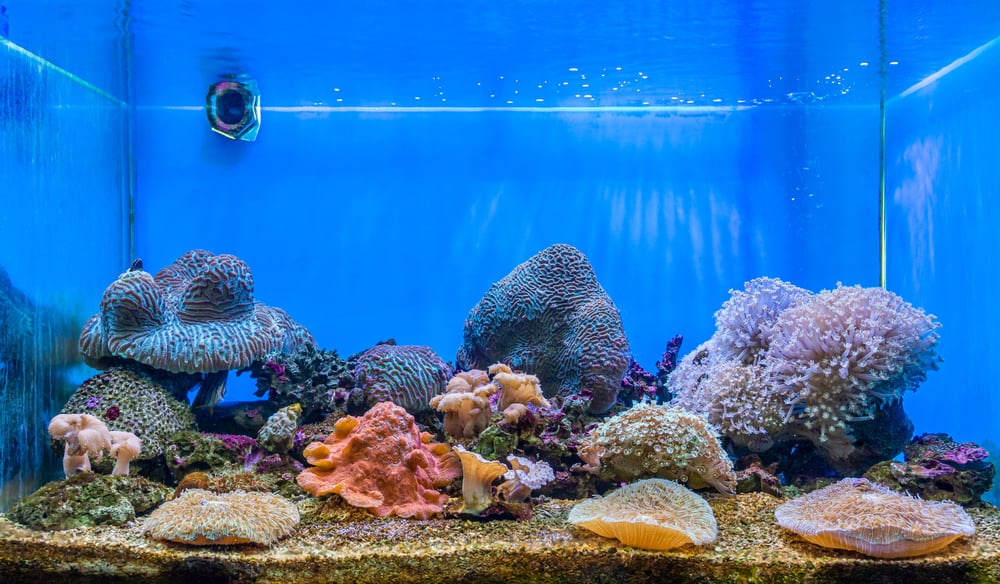
High alkalinity can turn into every hobbyist’s nightmare, especially in a reef tank.
Since your coral’s health and growth depend on alkalinity, you should keep the DKH levels stable.
High alkalinity can cause lots of problems for your fish and corals.
Read on to find out more about alkalinity effects, its acceptable range in a reef tank, how to test the alkalinity levels, and how to lower it safely.
5 Best Ways to Lower Alkalinity In Reef Tank

1. Just Wait!
The corals you keep in your reef tank are the key to solving your problem.
Corals such as LPS (large polyp stony coral) or SPS (small polyp stony coral) consume carbonates and bicarbonates to build up their support structures, which are called coral exoskeletons.
This way, they help drop the alkalinity levels in the reef tank.
Sometimes, the aquarium’s alkalinity isn’t that far from the proper range.
In that case, your best and safest option is to wait for the corals to use up the contaminants and lower the alkalinity naturally, without messing up the pH.
Depending on the size, type, and the number of your corals, the alkalinity level will decrease between 1 and 2 DKH every day.
Wait for at least three days and measure the DKH.
When everything goes back to normal, start your regular schedule of dosing the tank and keeping the alkalinity levels in the recommended range.
2. Change the Water
The next best method is to perform partial water changes to boost the water quality in the tank.
Daily 20–25% water changes will slowly reduce the alkalinity levels and help you reach the desired level.
Use Reverse Osmosis water since it’s free of almost all minerals with a very low TDS and hardness.
Mix the fresh water with a high-quality salt mix.
The salt should have a DKH of 8 or less.
Be patient with this method to get the best results.
3. Add Organic Acid (Vinegar, Vodka)
Dosing the tank with organic acid is a quick and easy fix for decreasing the alkalinity levels, but it’s short-term, unlike the first two methods.
After a drop in alkalinity, it’ll start to rise back up again slowly.
Another side effect of this method is that adding acids to a reef tank will cause the pH to drop.
To deal with this issue, increase surface agitation to boost the dissolved oxygen levels and gradually raise the pH.
The organic acids you can use are white vinegar and vodka.
Pure distilled 5% vinegar works the best.
You can also dilute a 98% good grade vinegar to a 5% solution.
Don’t make too much of the diluted mix to store because bacteria can break it down after a couple of days and reduce dissolved carbon amounts.
Slowly drop small amounts of vodka or vinegar in the reef tank.
It’s best to do this during the day when the pH and oxygen levels are at their highest.
Here’s a chart you can use to plan your daily doses of vinegar until the problem is solved:
4. Add Mineral Acid or Decorations
Mineral acids like hydrochloric or muriatic acid and sulfuric acid are stronger than organic acids.
It’s better not to use them unless the alkalinity levels are dangerously high and you need an instant solution to save the tank.
These acids are more concentrated, so they can drop the alkalinity levels as much as 2 DKH almost instantly.
This method can also reduce the pH levels very fast, so be careful with the drawbacks.
Adding decorations like oak leaves, coconuts, and Malaysian driftwood will reduce both the alkalinity and pH levels by releasing a chemical named tannin into the water.
This method works best in water with low hardness like RO water.
Don’t get worried if the water turns yellowish-brown.
This is the natural color of tannins and won’t hurt the fish or corals.
5. Adjust the Calcium Levels
Alkalinity and calcium levels interact very closely.
Two scenarios can happen if the alkalinity is too high:
- High Calcium: If the alkalinity and calcium are both equally high, the problem will go away over time as they’re consumed at the same rate.
- Low Calcium: You’ll have to dose your tank with calcium.
Don’t use balanced calcium additives like kalkwasser because the alkalinity will keep increasing.
Use products with only calcium supplements, or just the calcium part of a two-part product.
Test the magnesium levels if the problem continues.
If it’s below 1200 ppm, you need to increase the magnesium of the water.
What Is Alkalinity?

Alkalinity is the buffering capacity of water.
It measures the ability and capacity of water to resist pH changes and neutralize acids.
More specifically, alkalinity or “carbonate hardness” refers to the amount of carbonate (CO3) and bicarbonate (HCO3) ions in the water.
You shouldn’t confuse pH with the concept of alkalinity.
pH is a 14-point scale that indicates whether the water is predominately acidic, alkaline, or neutral.
On the other hand, the concept of alkalinity refers to the water’s ability to neutralize H+ ions.
Both pH and alkalinity levels are critical in a reef tank.
Keeping the alkalinity and pH stable will ensure that a healthy coral life thrives in the aquarium and help the corals to calcify more quickly and grow.
A steady pH level will create an antiseptic effect which can protect your fish against different diseases.
We measure alkalinity in Degrees of Calcium Hardness (DKH).
A total of 17.86 milligrams of calcium carbonate in one liter of water equals one DKH.
What Is the Ideal Alkalinity for a Reef Tank?
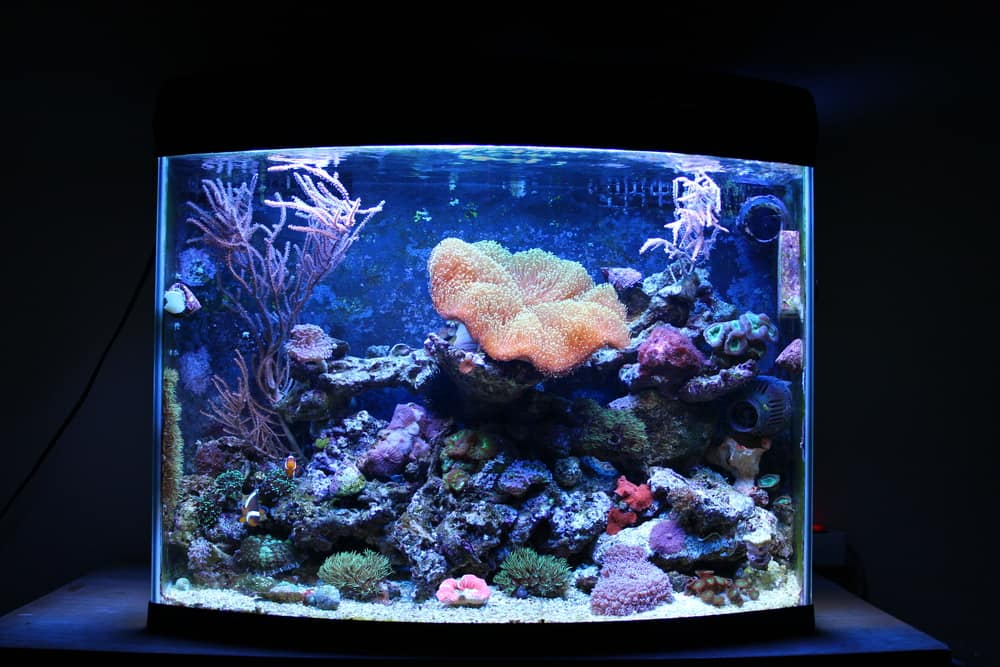
You should try to adjust your reef tank’s living environment as closely as possible to the corals’ natural habitat: the ocean.
Seawater’s alkalinity is around 8 or 9 DKH, which is why many hobbyists try to keep their tanks around that level.
In general, though, an alkalinity of 7–11 DKH is acceptable.
When adjusting alkalinity, consider the type and population of your corals as well as the nutrient levels in the tank, including calcium, magnesium, phosphates.
The key is to keep the alkalinity levels stable by dosing your tank with quality slat mix, calcium, and magnesium.
If your corals seem healthy, there’s no need to change the DKH levels.
If you’re keeping fish in the tank, adjust the alkalinity levels between 7.8 and 8.3.
The color of corals will also pop in the lower range of acceptable alkalinity levels.
How Does Unstable Alkalinity Affect a Reef Tank?
1. Low Alkalinity
Low alkalinity will result in rapid pH fluctuations, and it also inhibits coral growth and results in loss of color.
You’ll notice slow tissue necrosis, rapid tissue necrosis, or coral bleaching if the alkalinity drops.
This is when the coral’s tissue peels away and leaves a bare skeleton.
2. High Alkalinity
High alkalinity accelerates photosynthesis in corals, resulting in a boost in skeletal growth.
The coral tissue won’t be able to keep up with the speed.
Therefore, it’ll start to thin, causing the tank lights to burn the coral tips.
This phenomenon is called “alkalinity burn.”
Since alkalinity and calcium levels are inversely related, high DKH levels are likely to cause a noticeable drop in calcium levels.
High alkalinity will put undue stress on your fish, leaving them more vulnerable to diseases.
The protective mucus layer on a fish’s body gets dissolved in alkaline water, leaving it defenseless against bacterial and fungal infections.
Moreover, an ammonia spike is more likely to happen, burning the fish’s gills and fins, and the alkaline water prevents them from growing back.
If you don’t treat the condition immediately, the fish have a very high chance of dying.
Here are a few other side effects of high alkalinity:
- High alkalinity will make it hard for the fish to breathe.
- Fish will lose control over their swim bladders, so they won’t be able to swim easily.
- If the alkalinity is between 10 and 12 DKH, it’ll promote coral and coralline algae growth.
What to Consider When Lowering Alkalinity?
1. Before the Remedy
As bad as high alkalinity can be, you shouldn’t try to lower it without taking proper precautions.
Otherwise, you may end up harming the creatures in your tank.
If you’ve confused the symptoms of another problem with high alkalinity and try to decrease it, you may end up with extremely low alkalinity.
Assuming the water has a low pH, ammonia will start to build up in the tank.
When performing a water change, the incoming water naturally has a higher pH.
Once it mixes with the tank water, it causes the ammonia to become toxic.
Test the water and make sure the alkalinity levels are high before taking any action.
Double-check the DKH levels with two aquarium test kits from different brands or manufacturers.
Also, test the calcium and magnesium levels.
2. After the Remedy
Once you’ve taken measures to reduce alkalinity, keep testing the water for a couple of days to make sure sudden fluctuations in water parameters don’t hurt your fish and corals.
If the pH level increases, don’t use a pH buffer to lower it because it can quickly fuel the alkalinity and get you back where you were.
Use other methods to lower the pH.
The best way to do so is by reducing the dissolved CO2 levels in the water.
Use a CO2 scrubber, run an air line outside, or install an air exchanger to lower the amount of CO2 in the air.
How to Test Alkalinity
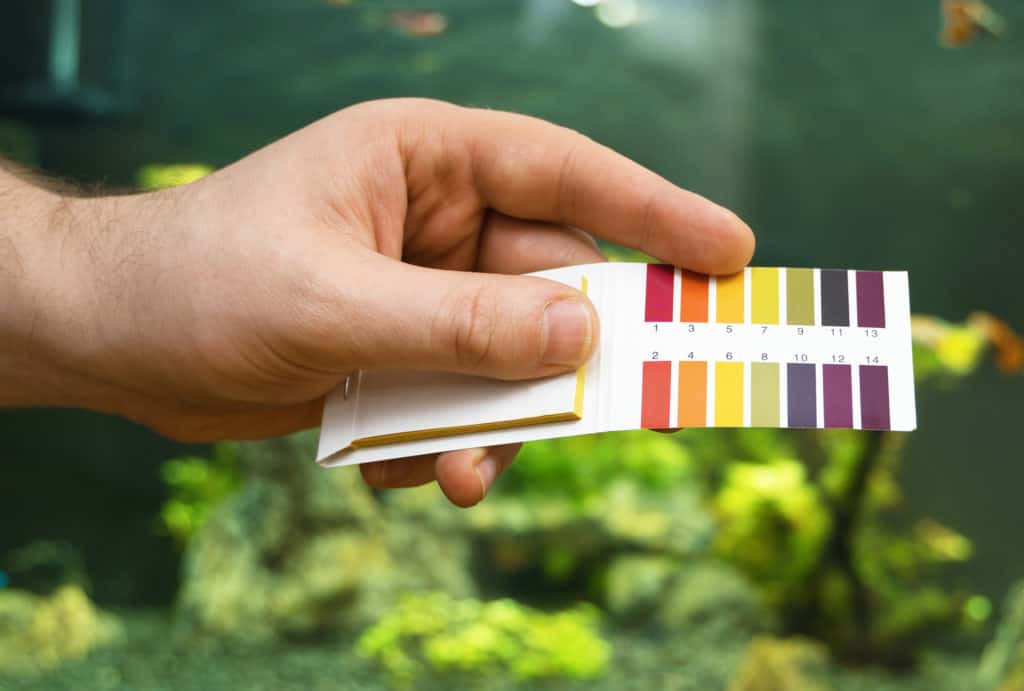
You can test the alkalinity with various test kits and test strips, some of which are more accurate, and of course, more expensive than others.
For instance, digital test kits like the Hanna Checker or the Red Sea test kit are very popular.
You can make an alkalinity test kit with standard acid and a pH meter.
Take a measurable sample of aquarium water.
Add the acid to the sample slowly and keep checking the pH with a pH meter.
Once it reads 4.5, use the following equations to calculate your water’s alkalinity level:
- Alkalinity (mEq/L) = (Volume of the used acid / Volume of the water sample) * 100
- Alkalinity (DKH) = (Volume of the used acid / Volume of the water sample) * 280
Remember to use the same unit to measure the acid and water volumes—for example, measure both in millimeters.
If it’s your first time trying this method, it’s best to get one or two other commercially available test kits to verify the results.
Maintaining water quality will help you keep the alkalinity levels stable.
1. Keep the Tank Clean
Keeping the tank clean will help you retain alkalinity and other water parameters.
Depending on the number of fish and corals you have and how fast the water gets polluted, do partial water changes frequently.
Remove any excess food from the tank after the inhabitants are done eating.
Be sure to get rid of any dead fish, snail, or leaves from the aquarium.
Remove the fake plants and decorations from the tank every once in a while to clean them.
Don’t use soap, detergents, or tap water, since they can leach harmful chemicals into the water.
RO water or diluted vinegar liquid works the best.
2. Test the Nitrogen Cycle
If the nitrogen cycle is working properly in a tank, fluctuating parameters can rarely be a problem.
Use an ammonia test kit often.
If the ammonia levels are high, take the required actions to lower them.
- Reduce the Water Hardness : Keeping the water hardness under control means that excess minerals like magnesium, calcium, and sodium aren’t dissolved in the water.
Use RO water for your water changes to keep them out of the tank.
Don’t incorporate a tap water softener because it replaces calcium and magnesium molecules with sodium ions, which isn’t good for your reef tank’s inhabitants.
- Check the Temperature: Use a heater to maintain the temperature at a proper level and prevent fluctuations. Check it with a thermometer often.


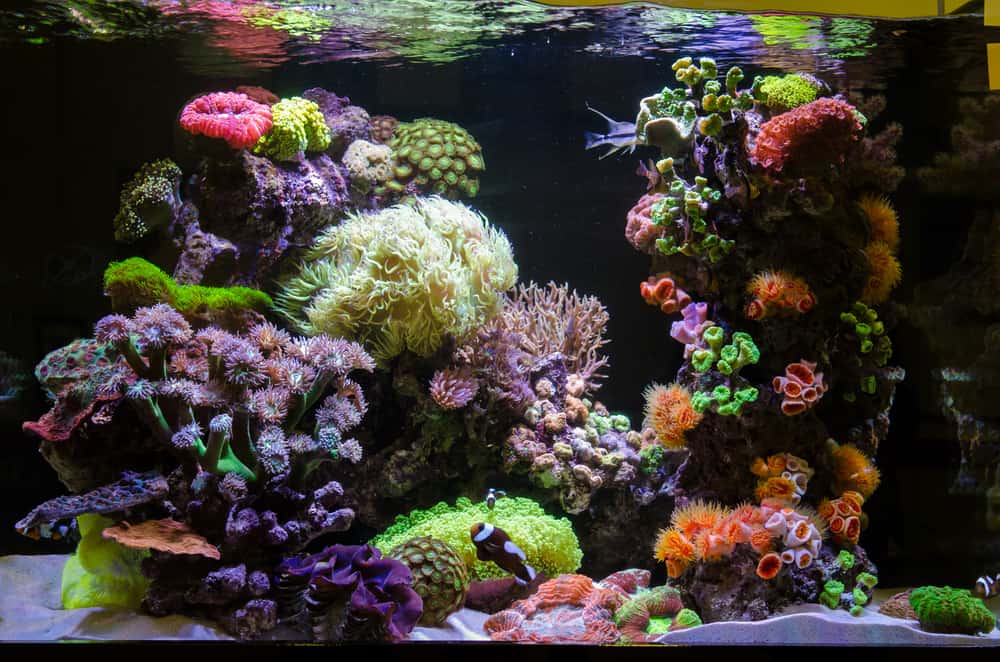
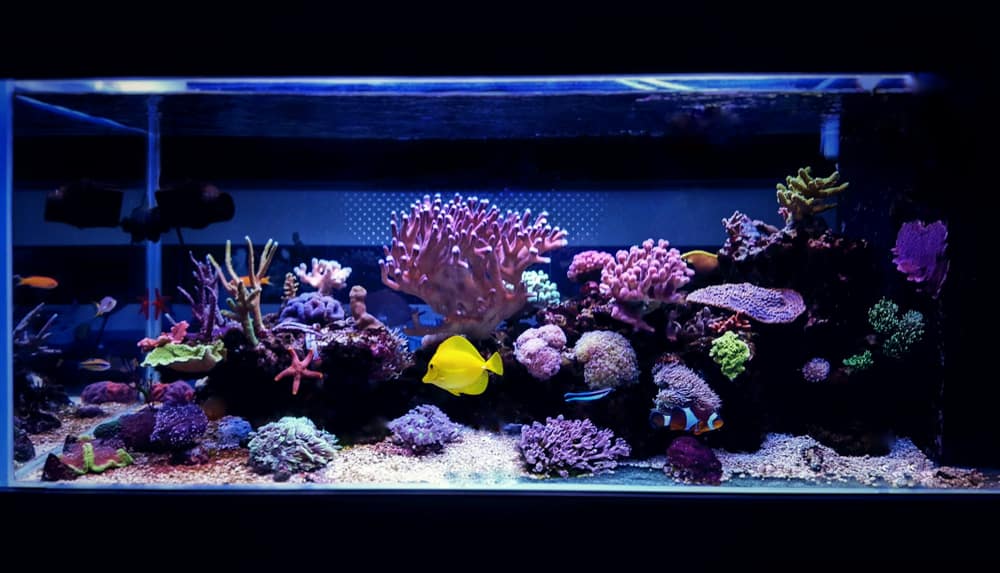
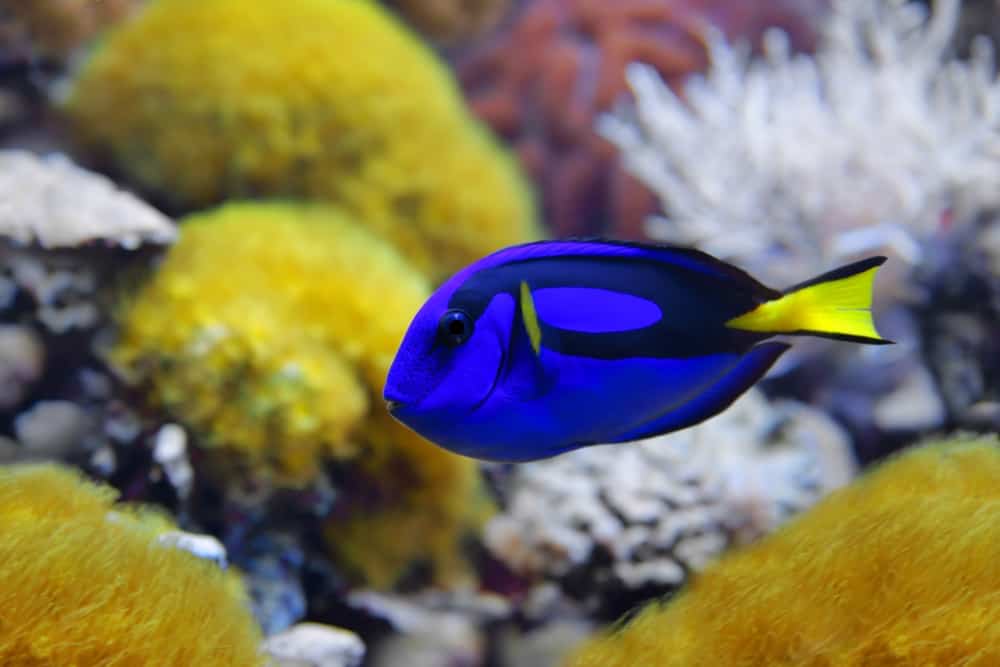
Leave a Reply
You must be logged in to post a comment.